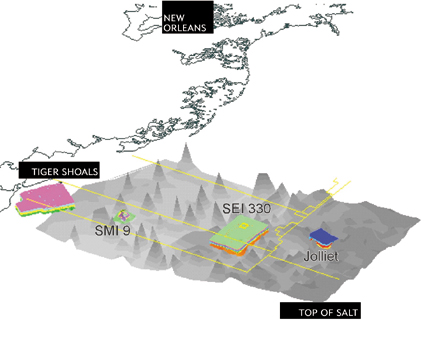
Geotimes Home | AGI Home | Information Services | Geoscience Education | Public Policy | Programs | Publications | Careers

 "We're dealing
with this giant flow-through system where the hydrocarbons are generating now,
moving through the overlying strata now, building the reservoirs now and spilling
out into the ocean now," Cathles says.
"We're dealing
with this giant flow-through system where the hydrocarbons are generating now,
moving through the overlying strata now, building the reservoirs now and spilling
out into the ocean now," Cathles says.  |
Geotimes Home | AGI Home | Information Services | Geoscience Education | Public Policy | Programs | Publications | Careers |